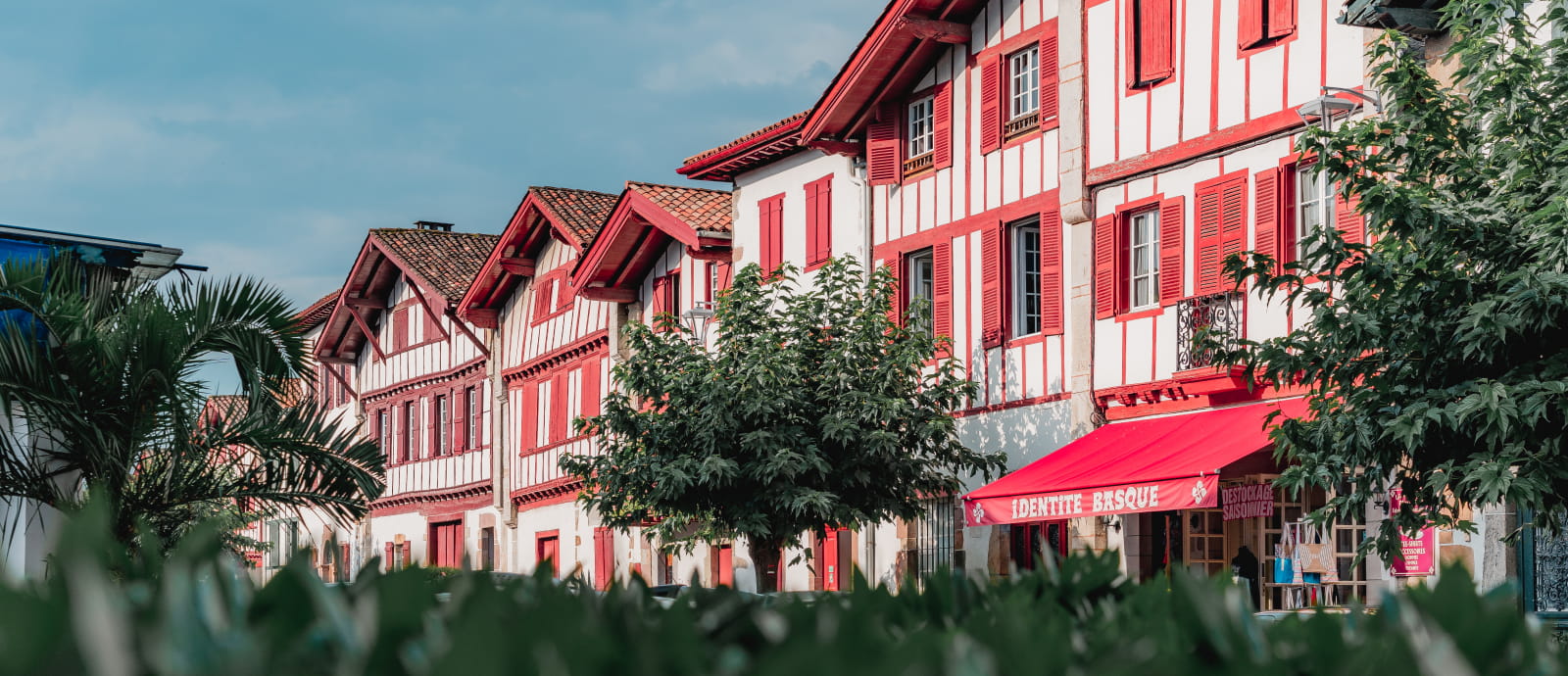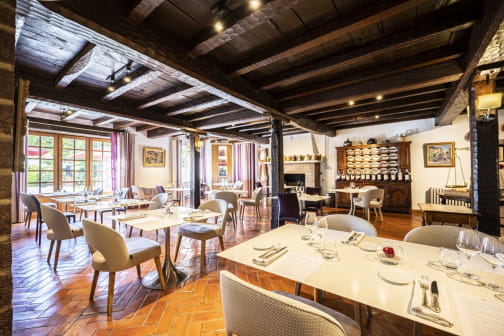
Ainhoa : the beautiful houses in the main street
Ainhoa
Situated between the Nive valley and the Navarrese border, Ainhoa is classified as one of the most beautiful villages in France.
This 12th century bastide-street, created to welcome pilgrims on their way to Santiago de Compostela, combines the green of its hills with the white and red facades of its old houses. In the surroundings, beautiful walks offer you the opportunity to discover the chapel of the hawthorn and the numerous streams and undergrowth.
The History and heritage
Historia eta kultura ondare
A stage along the Way of St. James
Originally, only nomadic shepherds used to live in the place where the village now stands. However, in the 12th century, Juan Perez de Baztan, the landowner, and the Premonstratensian Abbot of Urdax, representing the ecclesiastical authority, decided to create the Ainhoa apostolic vicariate, a territorial jurisdiction ministered by the Church.
Ainhoa was considered as a place of welcome, offering food and accommodation for pilgrims on their way to Santiago de Compostela. Over time, Ainhoa became an essential stopover along the route.
A Bastide : fortified village
The village was laid out in the geometric, fortified form of a bastide with a single street. This principal street is a wide road bordered by half-timbered houses in the Labourdine-style of the 17th century and 18th century dwellings. The village’s main square is organised around the fronton wall which adjoins the church.
The conservation of these beautiful buildings and the quality of life here have earned Ainhoa the privilege of being listed as one of the “most beautiful villages in France”.
The special features of the Ainhoa houses

As Ainhoa was designed as a Bastide village, it has only one main street and all the houses face the street. It should be noted that in the Basque country, houses are usually built facing towards the east in order to protect them from the bad weather that comes predominantly from the ocean. However, because the village of Ainhoa is built along the main street, all the houses on one side face west. This is why when you walk down the street you notice that one side is more decorated with beautifully colourful half-timbering while the other side is less decorated and has narrower openings.
Lintels in Ainhoa
When you walk down the road of Ainhoa make sure you take a good look above the entrances to the houses. Many have lintels situated over the doors, either in pink sandstone or in wood, indicating the date of construction and sometimes information about the house’s inhabitants. The most emblematic example is the house named Gorritia that is known for its inscription: “This house called Gorritia was bought by Marie de Gorriti, mother of the deceased Jean Dolhagaray, thanks to money sent from America by him; this house can never be sold or given as a guarantee. Drawn up in 1662.”
The secret corners of Ainhoa
To discover Ainhoa, don’t hesitate to leave the main street and go behind the houses : they hide gardens and vegetable gardens. You can take a little path that goes through these green spaces.
A village of craftsmen
Today these beautiful houses in the centre of the village are the local shops of local producers, craftsmen. You can discover products made from donkey’s milk, a wood crafts workshop and other local producers…..But, above all, there are also some very good restaurants like the Ferme Ithurria, which has been in the same family for two generations and has a Michelin star.
Mount Atsulai
Atsulai mendia
A landscaped promontory
Above the village, Mount Atsula rises to an altitude of 389m. Access is from a stone path that starts in the village. The climb is quite steep and it takes from about 45 minutes to 1 hour to reach the summit. Once you have reached the top, you will quickly forget the effort it took to get there because the view is splendid and panoramic: below there is the village of Ainhoa with La Rhune and the Pyrenean Mountains in the distance, when it is really clear you can even see the ocean.
Aubépine Chapel

At the summit, there is a pretty chapel dedicated to Our Lady of Aubépine, Aranzazu in Basque. They say that the Virgin Mary appeared, at this spot, before a young shepherd in a burning hawthorn (aubépine) bush. The young shepherd returned to the village crying “Aranza zu” meaning “You in a hawthorn bush” in English.
After this event the chapel was built and every year there is a procession to this place. You will also find standing stones and 3 large crosses with the crucified Christ dating from 1898.
To continue your hike
From the summit, you can continue your walk towards the mountain of Errebi or continue following the yellow signs (see the trails detailed in the Plan Local de Randonnées – or local hiking map).

The blue pottok walk
Sare and Ainhoa have joined forces with the two border villages of Urdax and Zugarramurdi to create the territory of Xareta. They propose a walk marked out by blue horses which passes through these 4 villages and allows you to discover the treasures of each.
Urdax is a charming little village with beautiful Basque buildings and old farmhouses. In the centre of the village is a monastery and an old mill which are well worth a visit. Zugarramurdi is a famous village in the Basque Country. It is known as the village of witches. Between myth and reality, a visit to the witches' cave will allow you to learn more about this legend.


































